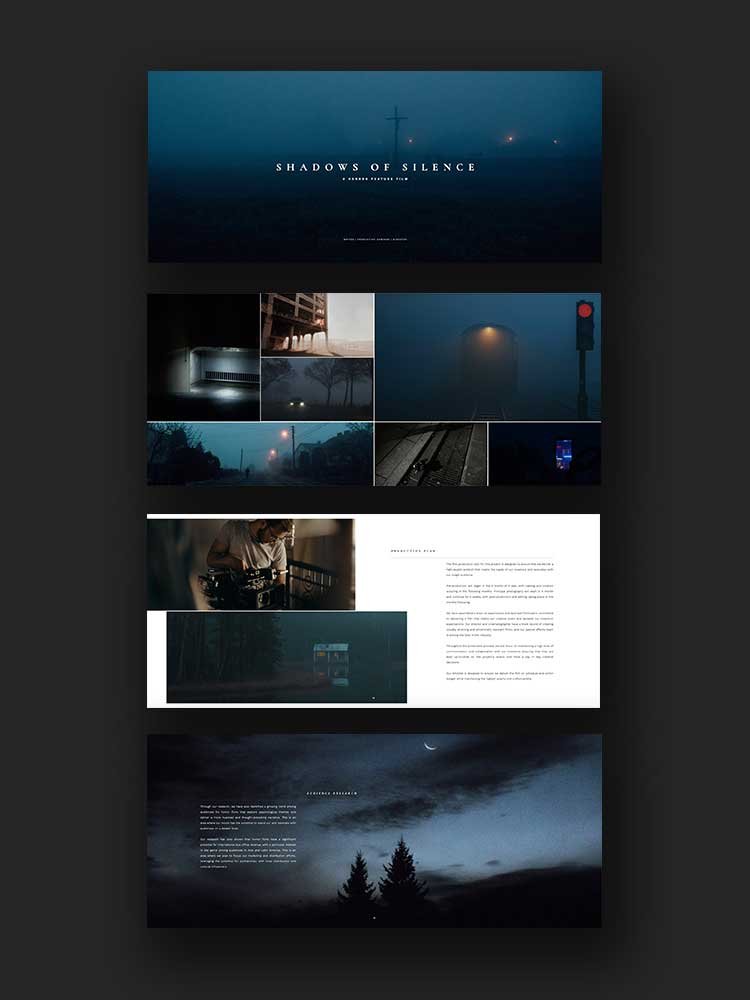How To Write A Treatment? Unlock the Secrets to Filmmaking Success
"Every secret of a writer's soul, every experience of his life, every quality of his mind, is written large in his works." - Virginia Woolf
Writing a treatment for your film or TV show is not just a way to sell your idea to studio executives; it's an integral part of your creative process.
It's the stepping stone that propels your great idea into a compelling story, a detailed screenplay. The process is as rewarding as it's challenging.
What Is A Treatment?
A treatment, dear reader, is a document that narrates the whole story of your film, TV show, or visual project in a present tense, prose-like format.
It often includes important scenes, main characters, crucial plot points, and even snippets of dialogue. It's more detailed than a log line but less detailed than the actual screenplay.
Why Write A Treatment?
A treatment serves multiple purposes:
It's an effective treatment tool for pitching your idea to production companies or studio executives.
It helps to outline your film treatment structure, guiding you in the writing process.
It's a marketing tool to attract a specific audience.
How To Write A Treatment?
James Cameron once said, "People call me a perfectionist, but I'm not. I'm a rightist. I do something until it's right, and then I move on to the next thing." The process of writing a treatment, too, requires this 'rightness.'
Start with The Log Line
The log line is a one-sentence summary that conveys the main idea of your story. For example, the log line of the movie 'Titanic' could be: "A young man and woman from different social classes fall in love on the ill-fated Titanic."
Introduce Your Characters
The next step is to introduce your key characters. Describe their personalities, their motivations, and their relationships with each other. Make sure your main characters are well-developed and intriguing.
Develop Your Three Act Structure
Most film treatments, and indeed most stories, follow the three act structure:
Setup: Introduce your characters and the world they inhabit.
Confrontation: The main character faces a problem that needs to be resolved.
Resolution: The climax of the story and the resolution of the problem.
Key Plot Points
Include the key plot points of your story. These are the events that drive the narrative forward, and they often involve the main character making important decisions.
Elaborate Your Story
Now, it's time to elaborate your story. Write a present-tense short story, detailing the entire script scene by scene. Include the act structure and how the story progresses through the three acts.
The Climax
This is the crucial part of your treatment. This is where your story reaches its peak. The tension, the drama, and the stakes are at their highest.
The Resolution
Write about how the conflicts in your story are resolved. This is where loose ends are tied up and the story reaches a satisfying conclusion.
Writing Your Treatment: The Process
First Draft
Just start writing. It doesn't need to be perfect on your first go. Getting your ideas down is the most important part of the first draft.
Revising
After you've finished your first draft, it's time to revise. Look for any inconsistencies in the story, character motivations, or plot points. Ensure that the act structure is well balanced, and there's an evolution in your characters and storyline.
Feedback
Get feedback on your treatment. This could be from your trusted circle of friends, fellow writers, or even professional consultants. Feedback is an invaluable part of the development process.
Final Draft
After incorporating the feedback and revising your treatment, you should have a well-structured, engaging, and compelling treatment that truly reflects the essence of your story.
Polishing Your Treatment
Here are some tips to make your treatment shine:
Present Tense: Ensure your treatment is written in the present tense. It creates a sense of immediacy and engages your reader more effectively.
Visual Imagery: Remember, you're writing for a visual medium. Use descriptive language to paint a picture of each scene.
Conflict: Conflict is the heart of any story. Make sure your treatment clearly demonstrates the conflicts your characters face.
Character Descriptions: Make your characters feel real. Provide descriptions that reveal their personalities and motivations.
Show, Don't Tell: This is a golden rule in writing. Show what's happening through actions or dialogue instead of just telling.
Sample Treatments & Software
Studying sample treatments can be incredibly beneficial for understanding the format and flow. There are many resources online where you can find film treatment examples or TV show treatment examples.
When you're ready to write your treatment, you might want to consider using screenwriting software. These tools can help with formatting and can make the writing process smoother.
Wrapping It Up
Writing a treatment may seem daunting, but with practice and dedication, it can become an enjoyable part of your creative process. Remember, there are no hard and fast rules in writing. Each writer has their unique style and approach to writing.
Whether you're writing a screenplay treatment, a TV treatment, or even a film treatment template for future projects, the process remains the same. It's all about telling your story in the most compelling way possible.
In the immortal words of Stephen King, "The scariest moment is always just before you start." So, take a deep breath, and let's start writing. After all, your story is waiting to be told.
Remember, as a writer, every character development, every plot twist, every piece of dialogue comes from within you. You are not just writing a treatment; you are breathing life into a world yet unexplored, yet unimagined. So, pick up that pen or open that laptop and write. The world is waiting for your story.
Frequently Asked Questions about Writing a Treatment
Why is a film treatment important in the writing process?
Writing a treatment is an essential part of the creative process. It helps you develop your idea, structure your story, and communicate your vision to others, like studio executives or production companies.
How detailed should my character descriptions be in the treatment?
Your character descriptions should provide insight into their personalities, motivations, and their relationships with other characters. Remember, your characters drive your story, so make sure they are well-developed.
How do I incorporate the three-act structure in my treatment?
A: Most stories follow a three-act structure: Setup, Confrontation, and Resolution. In your treatment, clearly outline these three acts and ensure your story progresses logically from one act to the next.
What is the difference between a script treatment and a screenplay?
A script treatment is a prose-like narrative of your story written in the present tense. It's used to pitch your story idea, and provides an overview of your story. On the other hand, a screenplay is the final written version of your story, complete with dialogue and detailed scene descriptions.
Is there any screenwriting software that could help with writing a treatment?
Yes, there are several screenwriting software tools available that can help with formatting and structuring your treatment. Some popular ones include Final Draft, Celtx, and Fade In.
How long should my treatment be?
The length of a treatment can vary. Most treatments are between 5 and 20 pages, but it ultimately depends on the complexity of your story.
Can I use a film treatment template?
Absolutely! A film treatment template can provide a good structure for your treatment, especially if you're new to the process.
Do I need to write a film treatment for a short story?
While treatments are often used for film and TV projects, they can also benefit short story writers. A treatment can help you outline your story and clarify your ideas.
Can I include dialogue in my treatment?
Yes, you can include snippets of dialogue in your treatment, especially if they reveal character or advance the plot. However, remember that a treatment is not a script, and the focus should be on the story, not the specific lines of dialogue.
How does a treatment serve as a marketing tool?
A well-written treatment can be used to pitch your story to potential investors, producers, or studio executives. It provides an overview of your story, characters, and vision, which can help others see the potential in your project.
Do I need to include character development in the treatment?
Yes, character development is a key aspect of your treatment. It's important to show how your characters change and grow throughout the story. This gives depth to your characters and makes your story more engaging.
How can I make sure my treatment appeals to a specific audience?
Understanding your intended audience is crucial when writing a treatment. Ensure your story, characters, and themes align with the interests and expectations of your audience. Remember, a treatment isn't just for you - it's also a tool to communicate your vision to others.
What are some common mistakes to avoid when writing a treatment?
Common mistakes include not clearly defining your characters or plot, not using the present tense, not following a clear three-act structure, and getting too caught up in minor details. Remember, your treatment should be a clear and engaging story overview.
Can writing a treatment help me with my actual screenplay?
Absolutely! Writing a treatment can help you understand your story better, develop your characters, and structure your plot. It's a great way to outline your ideas before diving into the full screenplay.
































